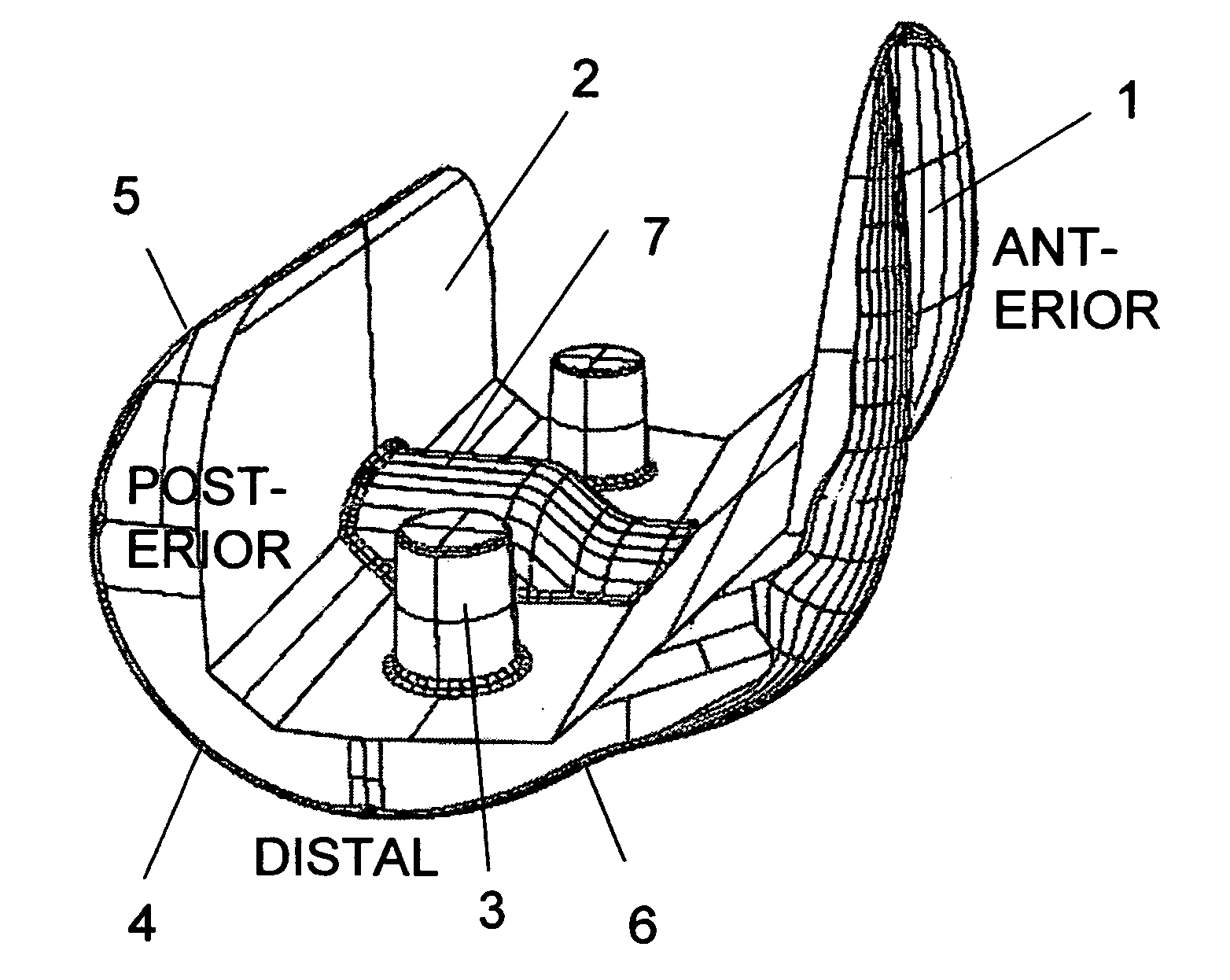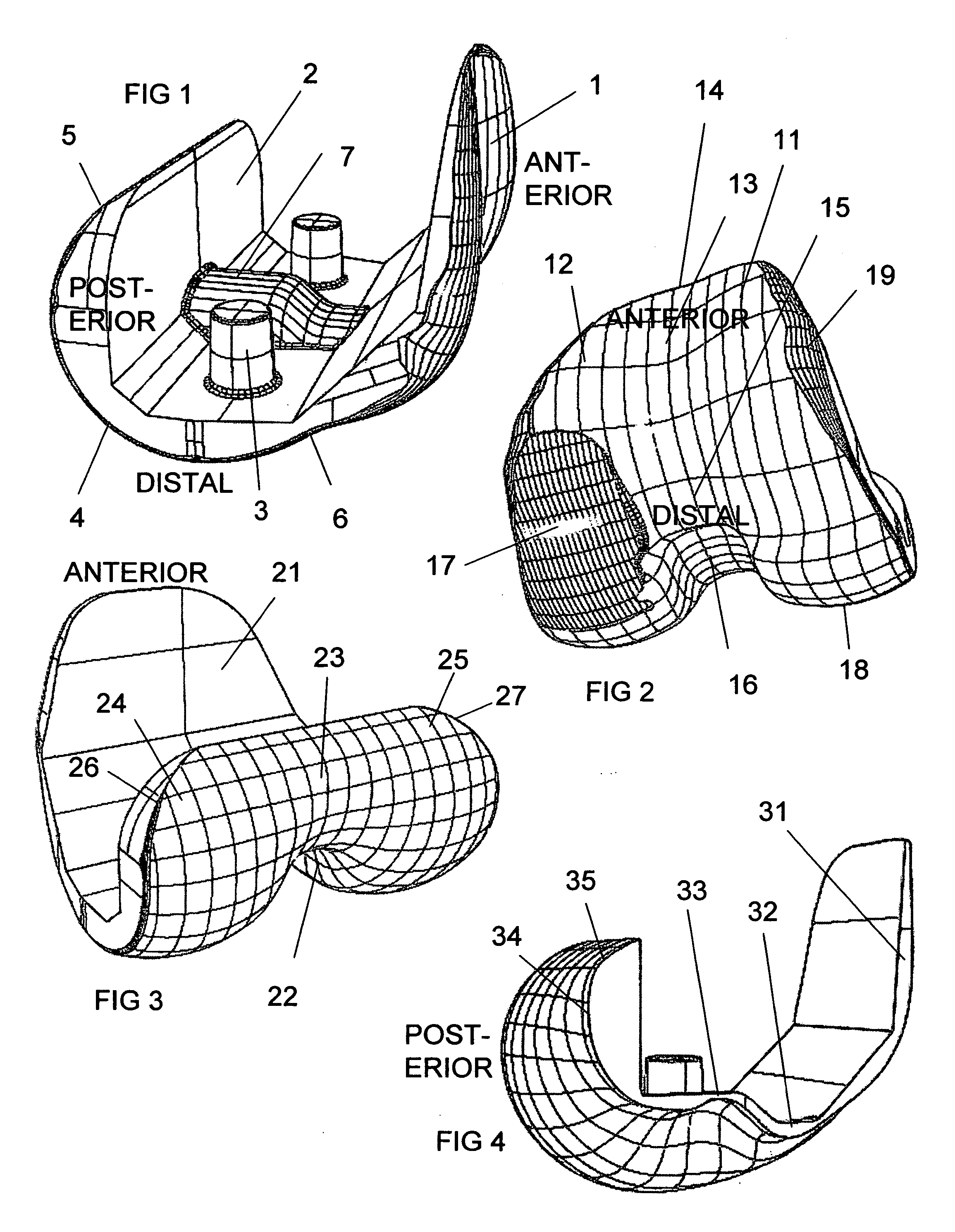Surface guided knee replacement
a knee joint and surface guided technology, applied in knee joints, prostheses, medical science, etc., can solve the problems of reducing the maximum flexion angle achieved, altering the mechanics of the patella, and not giving the ‘feeling of a normal knee', and achieve the effect of low conformity
- Summary
- Abstract
- Description
- Claims
- Application Information
AI Technical Summary
Benefits of technology
Problems solved by technology
Method used
Image
Examples
Embodiment Construction
[0033] Femoral Component (FIGS. 1 thru 4)
[0034]FIG. 1 shows a side view of the femoral component with an anterior portion to the right and posterior portion to the left. The general shape of the femoral component resembles that of designs which are in common use in orthopedics. The shape is designed to replace the bearing surfaces of the distal femur and to fix rigidly on to the bone.
[0035] A patella flange 1 is at the anterior portion of the femoral component. The interior surface of the component 2 has five facets, which fit against the prepared surface of the bone which is cut likewise. Fixation to the bone can be by cement or by a bone ingrowth surface. In either case, augmentation of fixation can be provided by fixation pegs 3.
[0036] The bearing surface 4 which articulates with the tibia runs from the distal portion of the femoral component to the posterior portion. For contact in high flexion, the bearing surface 5 preferably has a reduced radius of curvature to facilitate ...
PUM
 Login to View More
Login to View More Abstract
Description
Claims
Application Information
 Login to View More
Login to View More - R&D
- Intellectual Property
- Life Sciences
- Materials
- Tech Scout
- Unparalleled Data Quality
- Higher Quality Content
- 60% Fewer Hallucinations
Browse by: Latest US Patents, China's latest patents, Technical Efficacy Thesaurus, Application Domain, Technology Topic, Popular Technical Reports.
© 2025 PatSnap. All rights reserved.Legal|Privacy policy|Modern Slavery Act Transparency Statement|Sitemap|About US| Contact US: help@patsnap.com



